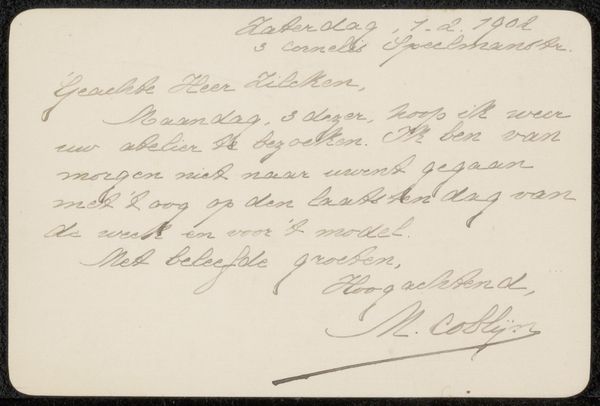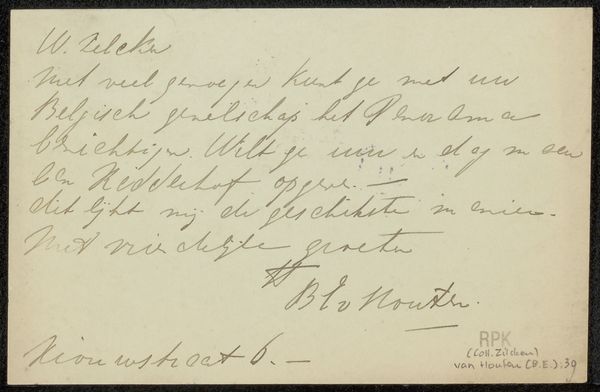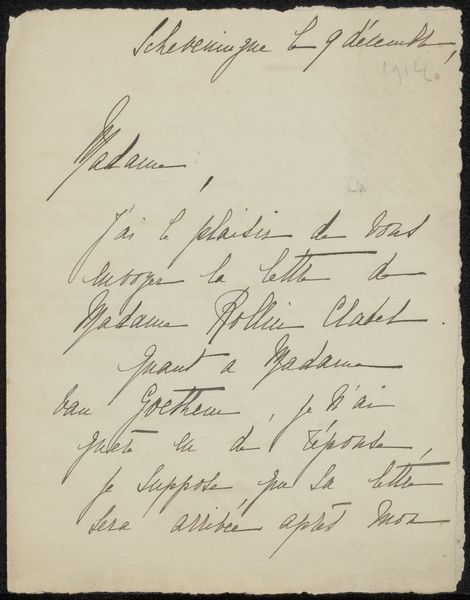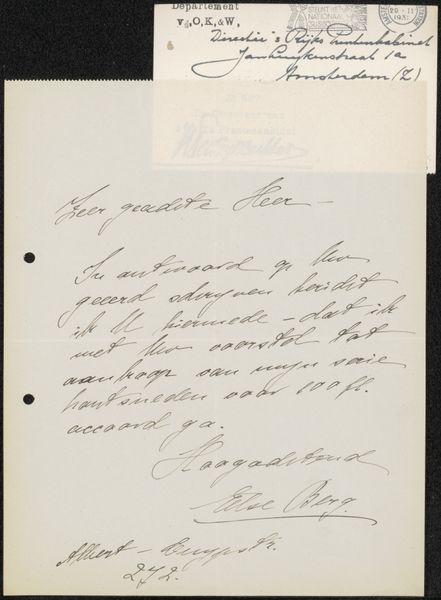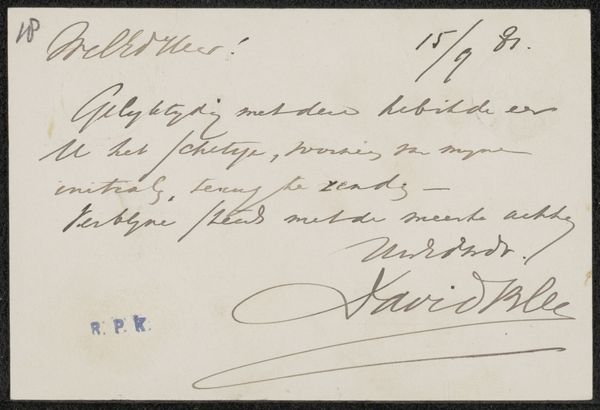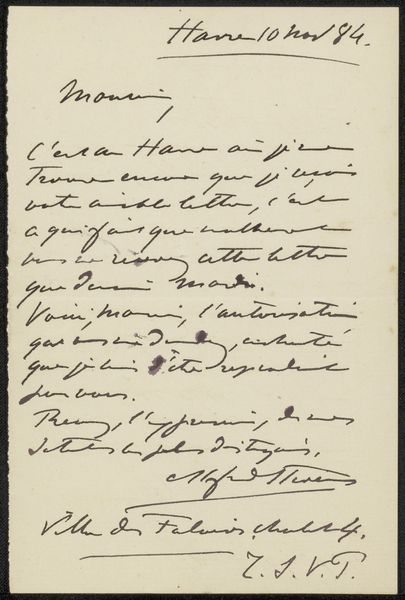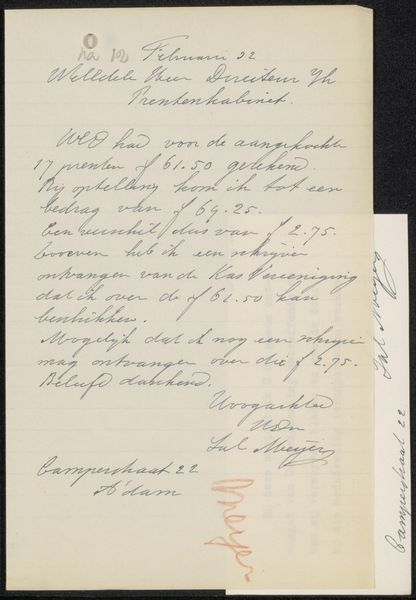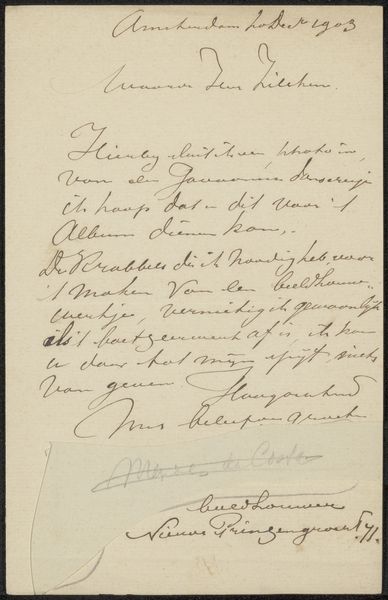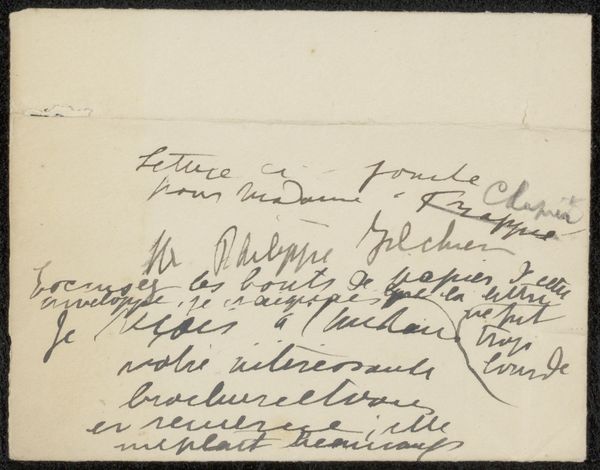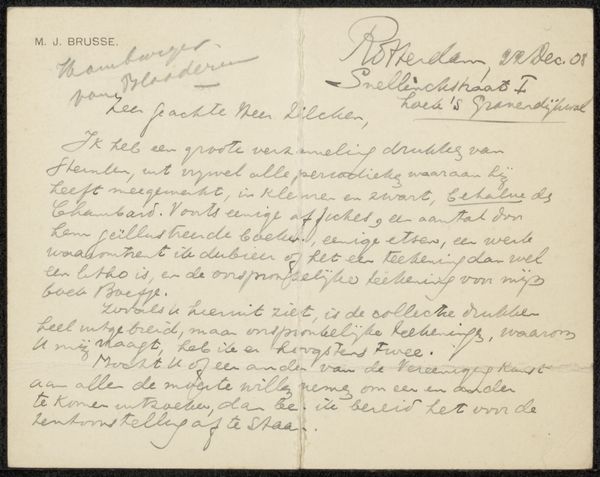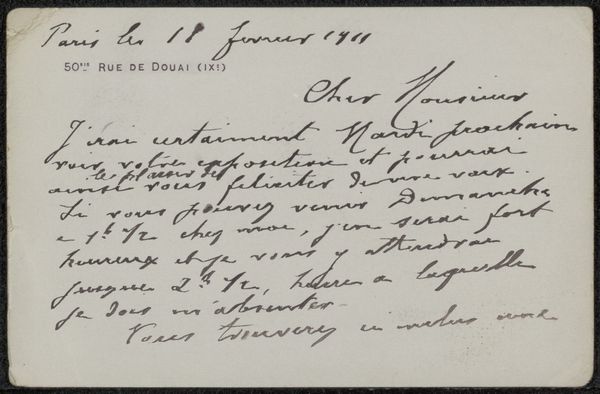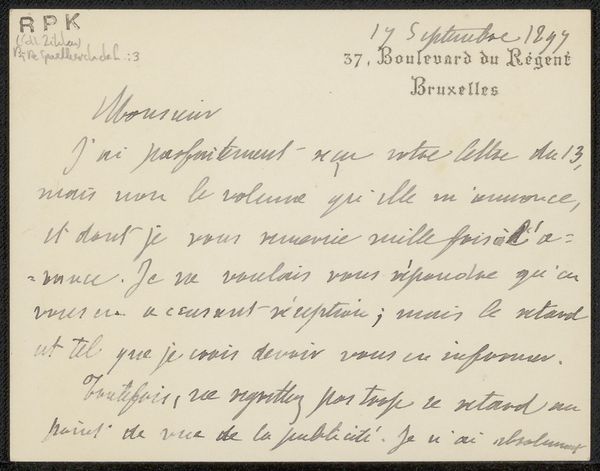
drawing, ink, pen
#
drawing
#
hand written
#
script typography
#
hand-lettering
#
old engraving style
#
hand drawn type
#
hand lettering
#
ink
#
hand-drawn typeface
#
thick font
#
pen work
#
pen
#
handwritten font
#
calligraphy
Copyright: Rijks Museum: Open Domain
Curator: Henri Evers’s “Brief aan Philip Zilcken,” likely from 1918, offers a glimpse into the past. It’s rendered in ink, with delicate penmanship defining the correspondence. Editor: There's an immediate sense of intimacy evoked by the piece; it feels personal, revealing something beyond the words themselves. The handwritten nature connects you directly to Evers's intent. Curator: Exactly! The structure reinforces this connection. Observe the precise layout; the standardized information about Evers is presented starkly. Then note the graceful script used to convey the actual message. The visual contrast enhances both utility and expression. Editor: Yes, and if we contextualize this within the sociopolitical landscape of 1918, a period marked by war and upheaval, such personal communication takes on an even deeper resonance. Consider what a tangible letter meant in that time—a vital link, particularly given postal censorship and anxieties about interrupted supply lines. Curator: Precisely. Each flourish of the pen, the letter's composition, functions as a meticulous dance between intent and aesthetic design. There's a formal quality intertwined with an earnest invitation, most likely related to a meeting or discussion between these men. Editor: Also note Evers' profession: architect. We can't divorce this from the built environment he actively shaped in Rotterdam, including urban landscapes that facilitated—or hindered—community relations, given this letter and their meeting. These designs actively served the Dutch state at home and colonial administration overseas. Curator: That may be so, but the abstract arrangement of light and dark creates depth and interest. It moves beyond pure document to visual representation. Editor: Though, I wonder if we should also not be blind to that context: Evers’ design work likely reinforced power structures of the time. In whose service did these buildings truly function? Did that support of existing hierarchical power relations provide these men the latitude to correspond? It invites us to reflect upon these power imbalances implicit even in private correspondence. Curator: Well, regardless, studying this letter encourages me to view these materials not just as functional pieces but as unique forms. Editor: Absolutely. The letter provides not only a window into past artistic correspondence, but into these powerful men as historical figures navigating turbulent waters, the tide having swept in long ago.
Comments
No comments
Be the first to comment and join the conversation on the ultimate creative platform.
